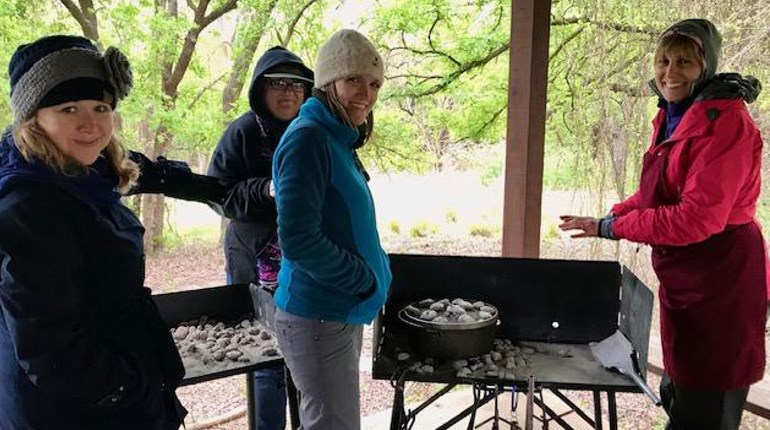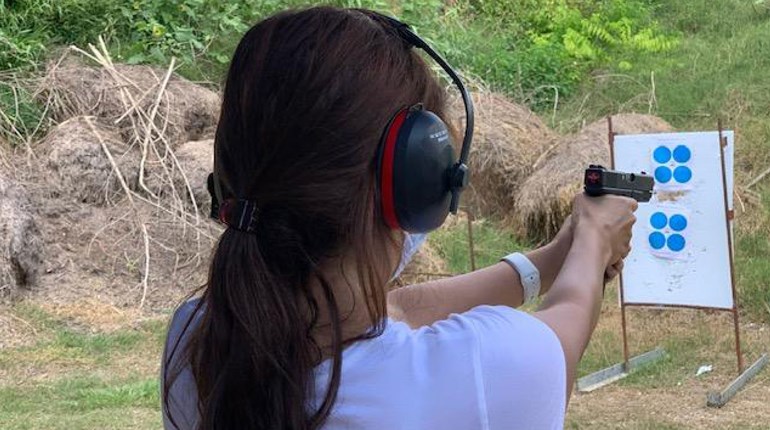
Some hunting organizations with the mission to recruit new hunters gauge their success by the number of individuals taken to the field every year. Most of these organizations have a simple recruitment model—send members into the community to find first-time hunters, take them hunting and then say goodbye! The organization checks another box and adds the first-time hunters to their total number for the year. However, a more apt measure of success might be how many of those first-time hunters returned to the field in subsequent years. I have had some organizations tell me that they did their part; now, it is up to the first-time hunter to advance on his or her own. They say this, even though the organization provides no follow-up resources for their “graduates.”
When I have asked about the policy of some of these organizations regarding returning hunters, I get some of the most curious responses. The most common and puzzling of these responses is that many return hunters just want to “fill the freezer.” This attitude totally ignores and rejects the notion that the participant really enjoys hunting, but has not yet discovered the resources or the means to go it alone. That is like introducing someone to any activity that you are passionate about, and then banishing them if they are successful.
Another major flaw with some first-time hunting organizations is not understanding hunters or their needs. The one hunt policy assumes that all hunters like deer hunting the same as waterfowl, small game or grouse hunting. I know some hunters that are waterfowl hunting fanatics and others that only enjoy deer hunting. A proper recruitment organization should give new hunters a taste of all the different flavors of hunting possible.
If you really want to make a difference in your quest to recruit hunters, try the Annual Recruitment Model (ARM). Start a small hunting group or club. Look for new recruits long before hunting season. Once you find a small group of new hunters with the right attitude, explain that you will help develop their interest for an entire year before turning them out on their own. This is not as hard or time consuming as you might think. You have a great partner in the National Rifle Association.
The Recipe for a Successful Annual Recruitment Model
Step 1
There are three stages of pre-hunt preparedness that need to be completed before the season opens. The first step is where the NRA comes in. All new hunters should become a member of the NRA. There are several benefits to this. First, the Second Amendment protections for which the NRA fights benefit all hunters and the sport as a whole. Second, NRA membership comes with an annual subscription to one of the NRA’s magazines; a subscription to American Hunter keeps new hunters abreast of legislative changes while also finding useful tips and techniques. Third, new hunters can take advantage of the NRA Hunter Education course. Several states have adopted this course to satisfy the Hunter Education requirement, and even if your state does not accept this class yet, it is great supplemental material to your state’s course.
Step 2
The second step of pre-hunt preparedness is getting new hunters involved. This is the time to sit down with your participants and plan a variety of hunts. This includes mapping out public lands, showing them how to apply for drawings and making students familiar with the local laws where you will be hunting. This is also a good time to teach new hunters how to find a lease or meet local landowners. When meeting landowners, it is sometimes possible to trade work on the property in the off season for hunting access. This teaches your students how to utilize resources when they eventually go it alone.
Step 3
Next, help your new hunters find the necessary gear. Shopping as a group benefits everyone. As the season approaches, local retailers frequently offer bargains and sales on hunting gear. This is a good time to show first-time hunters what they need versus what they want. Many merchants offer additional discounts when purchasing in large quantities, and many offer discounts to help new hunters entering the sport. It also helps the local economy at a time when local businesses and other brick-and-mortar stores need all the support they can get.
Step 4
The fourth step is the actual hunt. This is actually the shortest step. Just remember that telling is not synonymous with teaching. People learn by doing! The NRA’s Total Participant Involvement (TPI) strategy ensures group participation among new recruits. Everyone is expected to help everyone else. For example, if a new hunter harvests his or her game before other participants, that does not mean that he or she is done. There is always something to do. This means everyone gets up at the same time—in other words nobody sleeps in! There is always work to do around camp like cooking, cleaning and helping other new recruits as they bring in animals that need cleaning and processing.
Step 5
The fifth step involves following up with your students after the hunt and even after hunting season. This is the debriefing stage. You need to ensure that everyone gets their game properly processed, either by showing them how to do it themselves or where to take it to be done commercially. Lastly, this might be a good time to have a “Wild Game Cookout” for the members to enjoy their success and to share memories. Talk about resources for the following hunting season and, most importantly, be available to them as they “go it alone.”
As you can see, the pre-hunt stage is your largest stage. This is different from some beginner hunting organizations. As your new recruits begin planning their next hunting season, it is time for you to start looking for next year’s crop of new hunters. By incorporating the NRA in your new hunter organization, you are creating hunters, not just numbers!















































